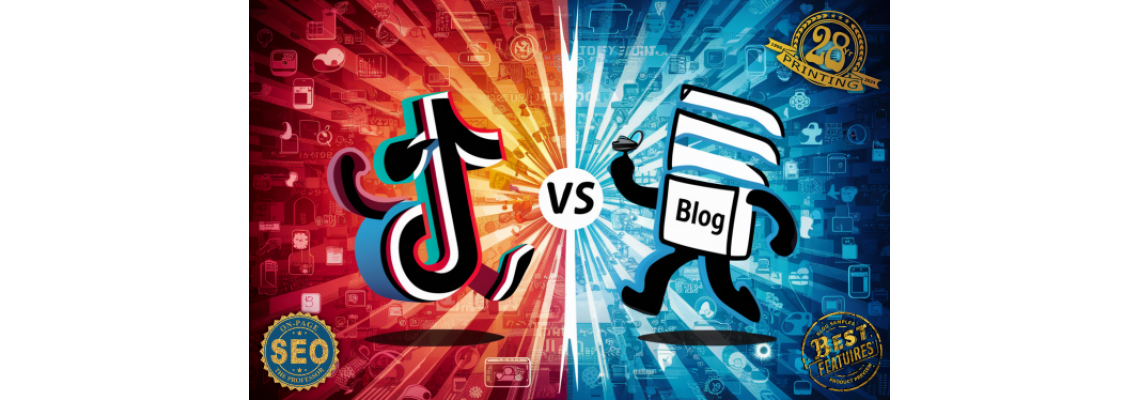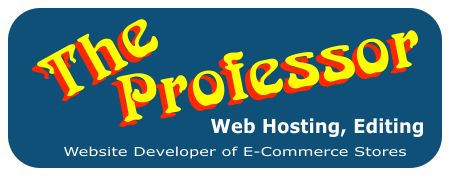08 Jul


The choice between TikTok and blogging depends on your goals,
target audience, and the type of content you want to create. Here's a comparison to help you decide which platform might be better for you:TikTok:
Pros:
Viral Potential:
- Wide Reach: TikTok's algorithm can quickly push content to a large audience, providing the potential for viral growth even with a new account.
- Engagement: High levels of user engagement with features like duets, comments, and shares.
Short-Form Content:
- Quick Consumption: Short videos (up to 3 minutes) are easy for users to consume and share.
- Creativity: Encourages creativity with various editing tools, effects, and music options.
Trends and Challenges:
- Participate in Trends: Leveraging trending sounds and challenges can boost visibility.
- Community Engagement: Engages a younger audience that is highly interactive.
Accessibility:
- Easy to Create: Creating and editing videos on TikTok is straightforward and doesn't require extensive technical skills.
Cons:
Content Lifespan:
- Short Shelf Life: Content on TikTok can have a shorter lifespan compared to blog posts, as the platform is fast-paced.
Depth of Content:
- Limited Detail: Short-form videos limit the depth and detail of the content you can provide.
Monetization:
- Indirect Monetization: While TikTok has monetization options, they are less direct and often depend on brand partnerships or the TikTok Creator Fund.
Target Audience:
- Demographic Specificity: Primarily attracts a younger demographic, which might not be suitable for all niches.
Blogging:
Pros:
Long-Form Content:
- In-Depth Information: Allows for detailed, comprehensive content that can thoroughly cover topics.
- Evergreen Content: Blog posts can attract traffic over a long period, especially if they are SEO optimized.
SEO Benefits:
- Search Engine Visibility: Well-written blog posts can rank on search engines, driving organic traffic to your site.
- Keyword Targeting: Ability to target specific keywords and queries relevant to your audience.
Monetization:
- Direct Revenue: Easier to monetize through ads, affiliate marketing, sponsored posts, and selling products/services.
- Control: Full control over content, branding, and monetization strategies.
Authority Building:
- Expertise: Establishes authority and expertise in your niche through detailed articles.
- Trust: Builds trust with your audience over time.
Cons:
Time-Consuming:
- Content Creation: Writing detailed blog posts takes time and effort.
- Maintenance: Regular updates and SEO efforts are needed to maintain and grow traffic.
Slower Growth:
- Organic Traffic: Building organic traffic through SEO can take time.
- Immediate Engagement: Blogs typically have lower immediate engagement compared to platforms like TikTok.
Technical Skills:
- Setup and Maintenance: Requires some technical skills for setting up, maintaining, and optimizing a blog.
Which is Better for You?
TikTok:
- Best for Quick Engagement: If your goal is to reach a large audience quickly, especially a younger demographic, and you enjoy creating short, engaging videos.
- Ideal for Trend-Based Content: Great for leveraging current trends and viral content opportunities.
- Creative Expression: If you prefer creating video content and using creative tools.
Blogging:
- Best for Long-Term Growth: If you aim to build long-term organic traffic and establish authority in your niche through detailed, valuable content.
- Monetization: Easier to monetize directly through various methods.
- Depth of Content: If you prefer writing and providing in-depth information on your topics.
Conclusion:
- Combined Strategy: For many content creators and businesses, a combined strategy using both TikTok and a blog can be highly effective. TikTok can drive quick, high-volume traffic and engagement, while a blog can provide detailed content and long-term SEO benefits.
- Align with Goals: Choose the platform that aligns best with your goals, skills, and audience. Consider where your target audience spends their time and what type of content they prefer.

Leave a Comment